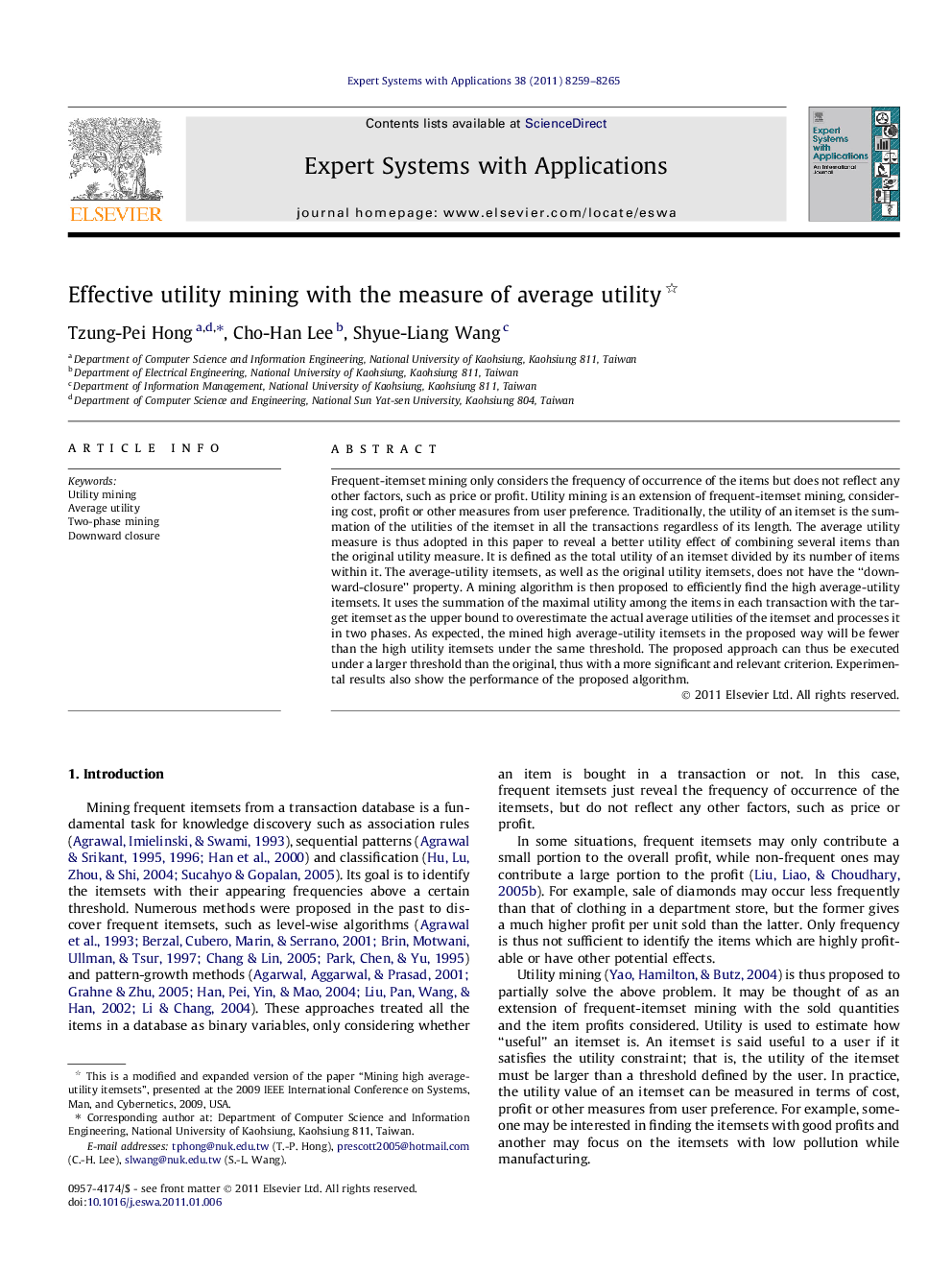| Article ID | Journal | Published Year | Pages | File Type |
|---|---|---|---|---|
| 385649 | Expert Systems with Applications | 2011 | 7 Pages |
Frequent-itemset mining only considers the frequency of occurrence of the items but does not reflect any other factors, such as price or profit. Utility mining is an extension of frequent-itemset mining, considering cost, profit or other measures from user preference. Traditionally, the utility of an itemset is the summation of the utilities of the itemset in all the transactions regardless of its length. The average utility measure is thus adopted in this paper to reveal a better utility effect of combining several items than the original utility measure. It is defined as the total utility of an itemset divided by its number of items within it. The average-utility itemsets, as well as the original utility itemsets, does not have the “downward-closure” property. A mining algorithm is then proposed to efficiently find the high average-utility itemsets. It uses the summation of the maximal utility among the items in each transaction with the target itemset as the upper bound to overestimate the actual average utilities of the itemset and processes it in two phases. As expected, the mined high average-utility itemsets in the proposed way will be fewer than the high utility itemsets under the same threshold. The proposed approach can thus be executed under a larger threshold than the original, thus with a more significant and relevant criterion. Experimental results also show the performance of the proposed algorithm.
Research highlights► The paper proposes a new idea called the average utility measure to evaluate the utilities of itemsets. ► The average utility measure reveals a good utility effect of combining several items. ► A mining algorithm is proposed as well to efficiently find the high average-utility itemsets. ► The high average-utility itemsets will be fewer than the high utility itemsets under the same threshold. ► Experimental results also show the good performance of the proposed approach.
